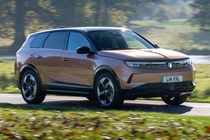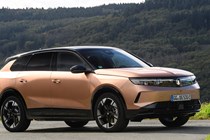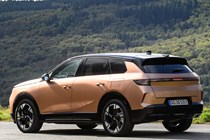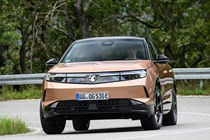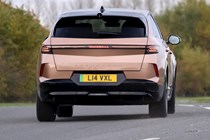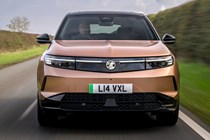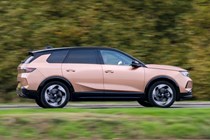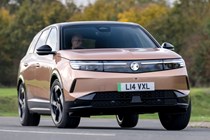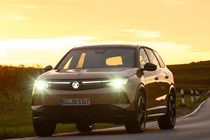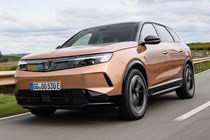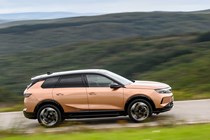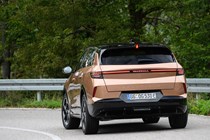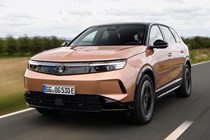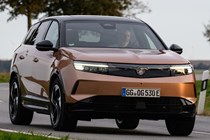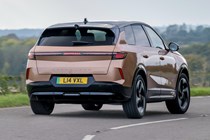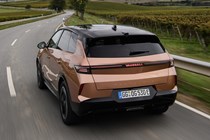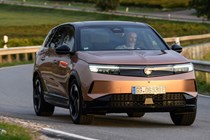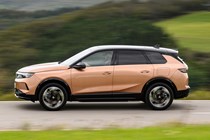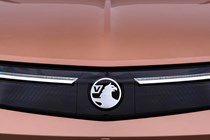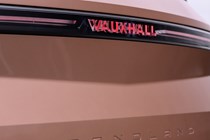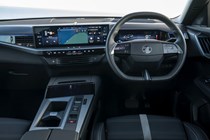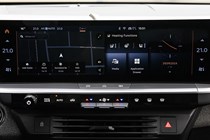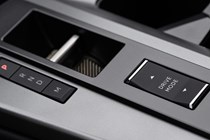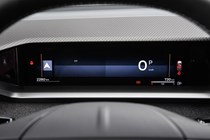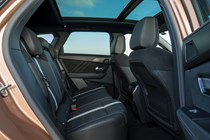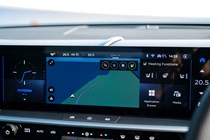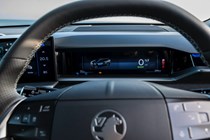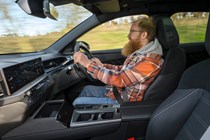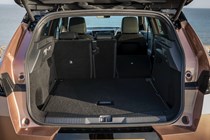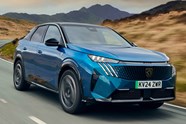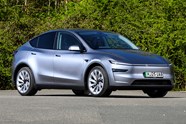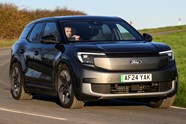
Vauxhall Grandland Electric review

At a glance
| Price new | £37,355 - £39,995 |
|---|---|
| Used prices | £27,418 - £37,180 |
| Road tax cost | £195 |
| Insurance group | 34 - 36 |
Get an insurance quote with

|
|
| Fuel economy | 3.6 - 3.7 miles/kWh |
| Range | 318 - 325 miles |
| Miles per pound | 5.7 - 10.9 |
| Number of doors | 5 |
| View full specs for a specific version | |
Available fuel types
Fully electric
Pros & cons
- Keenly priced
- Quality, user-friendly interior
- Tidy handling
- Plenty of rivals with longer driving ranges
- Firm ride
- Uninspiring acceleration
Vauxhall Grandland Electric SUV rivals
Overview
Although late to the party, the Vauxhall Grandland Electric finally brings the option of a fully electric family SUV to the brand’s range. Like the Grandland Hybrid and upcoming plug-in hybrid, it’s grown in all dimensions to give greater room for passengers and luggage, whilst also offering a more up-to-date look and the latest tech.
Under the skin, it’s all-new, sharing its underpinnings with the Peugeot E-3008. The new motors and batteries deliver more range and power than any previous electric model from the group, a good thing as the Corsa, Astra and Mokka’s are on the small side. A 73kWh battery and 213hp motor driving the front wheels kicks off the range, with more versions on the way.
There are three trims to choose from – Design, GS and Ultimate. Going for the entry-level Design means you get a skinny 10.0-inch touchscreen, which at least comes with wireless Apple CarPlay and Android Auto. The good news is that they all come with adaptive cruise control, lane keep assist and traffic sign recognition.
GS trim adds a fancier front grille with upgraded lighting. You also get larger 19-inch alloy wheels, as well as a gloss black finish for the roof, rear spoiler and front and rear bumpers. The infotainment screen grows to 16.0 inches, and satnav, wireless smartphone charging and ambient interior lighting join the fray. Despite this, it still remains under £40,000.
Finally, the Ultimate adds niceties such as a panoramic glass roof, heated windscreen, powered hands-free tailgate, and head-up display. You also get rear cross traffic alert, lane change assist and a 360-degree surround view parking camera.
Is that enough to put it ahead of impressive rivals such as the Skoda Enyaq, Renault Scenic E-Tech, Tesla Model Y or Ford Explorer? Read on to find out, and to see how we reached our verdict, following a drive on the international launch in Germany and the UK launch in East Anglia, be sure to head over to the Parkers how we test cars page.


